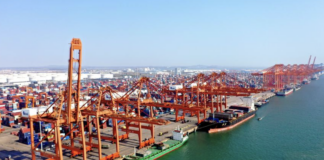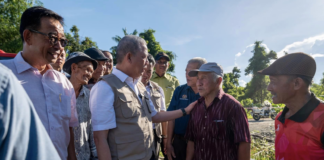KUALA LUMPUR, Oct 13 — Seat swapping is most likely to be one of the strategies adopted by parties and coalitions contesting in the 15th General Election (GE15).
The strategy is definitely not new as even the veteran politician, Lim Kit Siang, had contested in eight different constituencies throughout his political career from GE3 in 1969 and GE14 in 2018.
Political analyst Prof Dr P. Sivamurugan of Universiti Sains Malaysia (USM) said seat swapping was usually done by contesting parties in an attempt to penetrate and spread their wings to other constituencies.
“This is usually done when they are already strong in their seats and want to try to win new seats,” he told Bernama.
He said the parties would normally field their most winnable candidates with credibility, proven track record and leadership quality if they decided to swap seats.
“When the candidate has been the elected representative for the seat for some time, his or her personality, performance and contributions, may influence the voters in other constituencies. So this can be used by his parties as a strategy to win more seats,” he said.
Apart from DAP, this strategy had also been used by PKR which saw Datin Seri Wan Azizah Wan Ismail moving from the Permatang Pauh seat to Pandan.
Former Prime Minister Tun Dr Mahathir Mohamad had also moved from his traditional Kubang Pasu seat to Langkawi.
When asked whether there should a provision in the party constitution that will restrict elected representatives from contesting other seats to protect the interests of the voters, Sivamurugan said there shouldn’t be such a ruling.
“If there were such a restriction or limitation, it will slow down the process of adding or finding new candidates who are suitable to be fielded in any constituency,” he said.
Sivamurugan said it was also possible that the swap of candidates be done due to the fact that the candidates were no longer winnable or doomed to lose if he continued to be fielded to contest the seat.
Nevertheless, he said most elected representatives had a high tendency to just defend their traditional seats due to locality factor and their capability to continue their services there.
“If they were the elected representatives for the seats, they must have known their constituencies like the back of their hands. They usually have minimum issues concerning their constituencies and their parties. And they usually feel confident in their ability to retain their seats.
“But, for them to retain the seats for a long time, they have to ensure that there is no trust deficit, continue improving their credibility and respecting the mandate given by their voters,” he said.
Meanwhile, Assoc Prof Datuk Dr Baharuddin Aziz said although seat swapping is a popular strategy, it was also seen as an unethical move.
He said an elected representative should hold office for at least two terms to ensure that the development agenda for the constituency is fully implemented.
“Four or five years is just insufficient. If we want to look at their report cards, especially those who regularly swapped seats, we may find nothing. Even their constituents may not benefit form them,” said the Universiti Utara Malaysia senior research fellow at its Kuala Lumpur campus.
He said all parties need a written rule that compels its elected representatives to stay in one seat for at least two terms before running for other seats in the next election.
“This is to ensure that the mandate given by the people of the constituency is respected and to ensure that the promises made during the campaign are fulfilled,” he said.
Following are several MPs who had swapped and contested for different seats before:
1) Datuk Seri Hishammuddin Tun Hussein
GE10 (1999) – Tenggara
GE11 (2004) – Sembrong
2) Datuk Seri Anwar Ibrahim
GE13 (2013) – Permatang Pauh
GE14 (2018) – Port Dickson
3) Datuk Seri Dr Wan Azizah Wan Ismail
GE12 (2008) – Permatang Pauh
By-election (2014) – Kajang
By-election (2015) – Permatang Pauh
GE14 (2018) – Pandan
4) Nurul Izzah Anwar
GE13 (2013) – Lembah Pantai
GE14 (2018) – Permatang Pauh
5) Lim Kit Siang
GE4 (1974) – Bandar Melaka
GE5 (1978) – Petaling
GE6 (1982) – Kota Melaka
GE7 (1986) – Tanjong
GE10 (1999) – Bukit Bendera
GE11 (2004) – Ipoh Timor
GE13 (2013) – Gelang Patah
GE14 (2018) – Iskandar Puteri
6) Lim Guan Eng
GE9 (1995) – Kota Melaka
GE12 (2008) – Bagan
7) Mohamad Sabu
GE7 (1986) – Permatang Pauh
GE8 (1990) – Nilam Puri
GE9 (1995) – Kubang Kerian
GE10 (1999) – Kuala Kedah
GE11 (2004) – Kuala Kedah
GE12 (2008) – Kuala Terengganu
GE13 (2013) – Pendang
GE14 (2018) – Kota Raja
8) Tan Sri Abdul Hadi Awang
GE5 (1978) – Marang
GE6 (1982) – Dungun
GE7 (1986) – Marang
9) Tun Mahathir Mohamad
GE2 (1964) – Kota Setar Selatan
GE4 (1974) – Kubang Pasu
GE14 (2018) – Langkawi
















